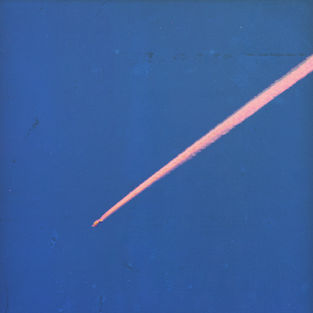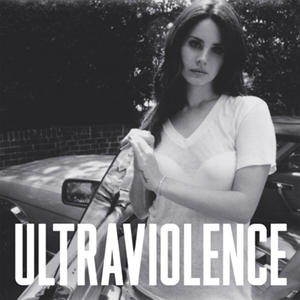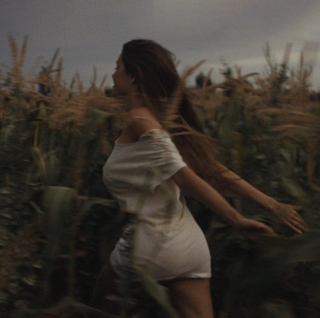In the modern day, only 5 percent of our ocean is explored, leaving an unimaginable abyss of unknown that is the murky blue. There are thousands of researchers trying to figure out what is under the waves, but what about another unexplored land? The subconscious is an unknown that only you can explore. Sure, others can help, but you are the only person that can be in that ocean, and art is how we photograph that strange sea. On August 23, 2017, English musician Archy Marshall released the song “Czech One,” which teased his second studio album under the alias of King Krule. On October 13, 2017, King Krule released “The OOZ.” The first time I listened to “The OOZ,” I was captured by its sound: a unique combination of jazz and rock elements that created a fascinating, peaceful, yet eerie tone to the album like you’re lost, floating in a desolate ocean, sandwiched between a blanket of stars and a deep unknown abyss.
Archy Marshall was born August 24, 1994, in Southwark, London. He grew up with separated parents, often skipped school, and experienced other disciplinary issues. In 2010, he began making music as “Zoo Kid” before adopting the name “King Krule” in 2011. His career gained popularity, especially in the U.S. where Marshall was featured on several talk shows, and in the U.K. where he was nominated for the BBC’s “Sound of 2013” award in 2012. When “The OOZ” was released in 2017, it was nominated for European Independent Album of the Year by IMPALA and then the Mercury Prize from Hyundai the next year.
Narratively, “The OOZ” is an exploration of Marshall’s subconscious as he floats through it, exploring the highs of love and the lows of isolation, the lyrics and instrumentals create a sound of floating through an unknown space. The theme of the album is most encapsulated through three tracks that play back-to-back: “Lonely Blue,” “Cadet Limbo,” and “Emergency Blimp.” Tracks 8-10 start with the description of someone who “slated” life, was never alone, lost his touch, “encased head to toe.” Someone who, despite having people who love him surrounding him, feels so isolated that he has given up on life. “Cadet Limbo” follows “Lonely Blue,” describing how free he feels when he’s with a girl he loves, like an astronaut “waltzing deep space.” Then, it transitions to “Emergency Blimp” where King Krule is yelling into space out of frustration that some sleeping pills he was given are not helping him sleep, just making him feel numb. This kind of dynamic between the tracks is repeated throughout the album, creating a purposefully chaotic yet cohesive feeling that brings you into the mind of Archy Marshall and, sometimes, into your own. Though it might not be the same story as is described by King Krule, many have felt the same as him in life, where the chaos of the mind is tearing you apart as you try as hard as you can to hold onto the breaks in the storm. The way King Krule explores his feelings of loneliness, love, and frustration makes you feel less alone in the end.
There are four tracks that I think particularly stand out above the rest. “Biscuit Town” is the first song of the album, and sets the tone of the whole album as he describes the feeling of sinking into himself, introducing the reason of this album as a tool for introspecting on his own subconscious. In terms of sound, “Biscuit Town” has a smooth yet punchy electronic jazz sound. The whole song is built around this dreamy piano that backs Marshall’s raw and energetic vocals, and then is followed by a loud punchy drum, creating an optimistic sound to kick off a largely melancholic album. The 8th track, “Lonely Blue,” is the pinnacle of a reoccurring theme of feeling isolated in the album, as well as that feeling of floating through the water without control thanks to a light dreamy guitar melody backed up by this light drum beat and slow punctual bass. Most of the song, Marshall sings in a quiet, wistful tone that turns more frustrated and louder throughout the song before, once again, getting quiet again like he has accepted the defeat of a lost love. “A Slide In” is by far the most unique song on the album. It is fascinatingly comprised of strange, distorted guitars and vocals that create the feeling that you have entered some sort of altered shape of reality as you delve deeper into the mind, ending in a chaotic cacophony of synthesizers and electronic horns before abruptly stopping. Finally, the 16th track, “The Cadet Leaps,” is an interlude to the album, but provides a beautiful, calm reprieve from the previously more aggressive, “Half Man Half Shark,” that came right before. The reprieve comes in the form of a jazz piano, with a strange sci-fi synth and melodic drum that Marshall silently sings over very briefly, before another voice whispers a poem that has been told in Spanish and English in two other interludes, but this time, in Filipino. Though those songs are the standouts, every song on the album goes into making “The OOZ” one of the most unique albums of its kind as well as King Krule’s most stand out album.
Overall, King Krule’s “The OOZ,” is by far one of the most introspective albums I have ever listened to. Its ability to tell a deeply meaningful story over strange, beautiful, jazz and rock instrumentals brings you into an entirely different world while you are listening to it. “The OOZ” is an album that is a must listen for any music enjoyer and, if you like it, some of King Krule’s other albums, like “Man Alive!” are must listens.







